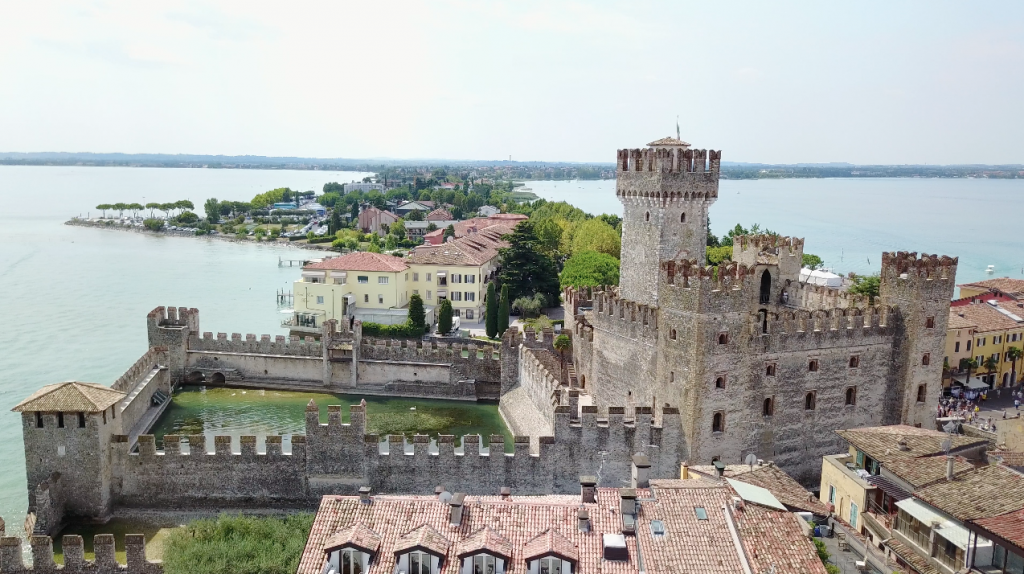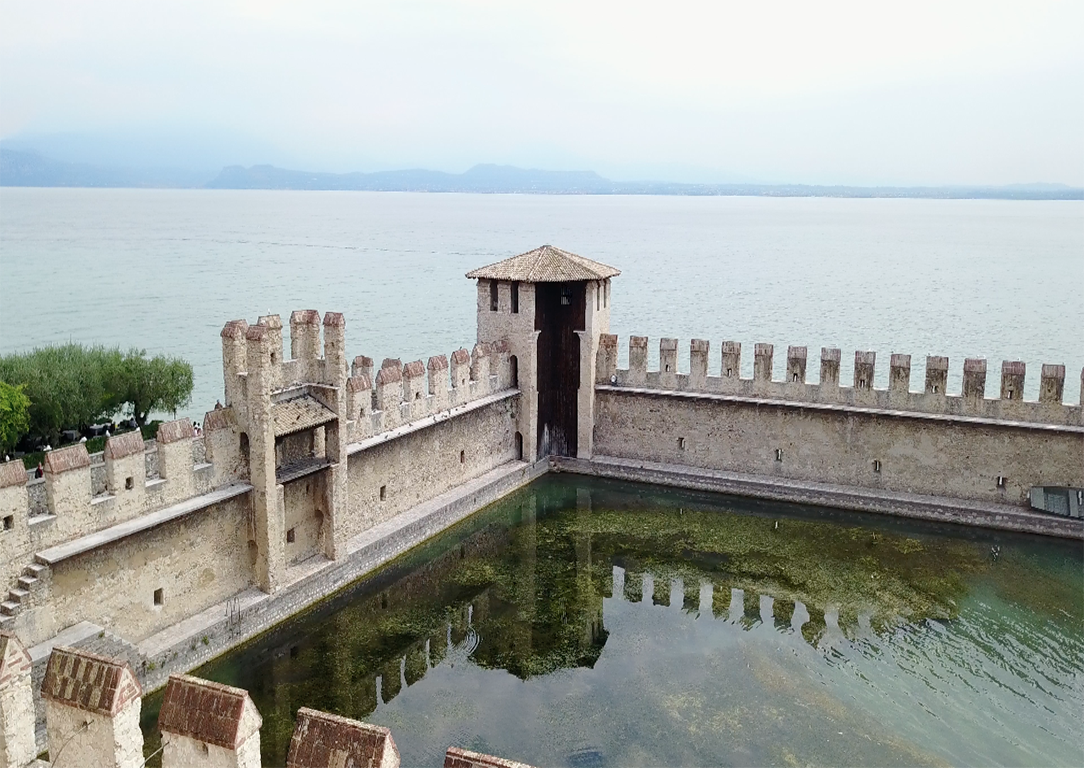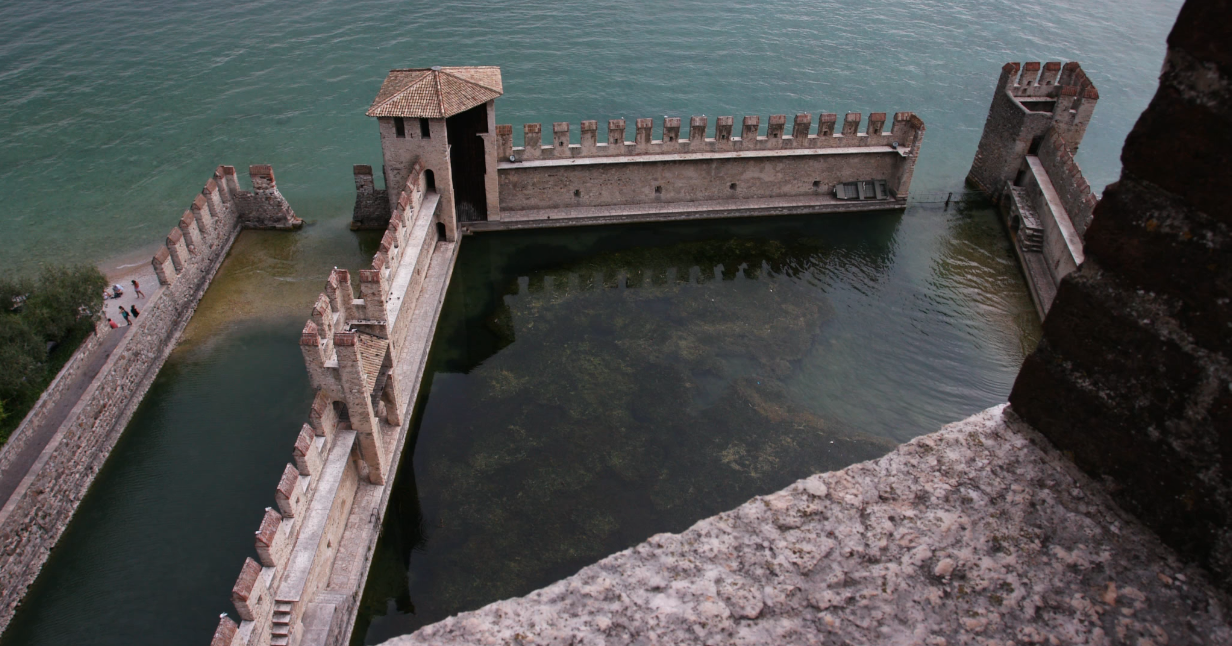The dock of the Castle of Sirmione: the charm of one of the oldest fortified ports in Europe.

The Italian term “darsena” derives from the Arabic dār al-sinā’a, “house of manufacturing”. It was then used in Venice to indicate both “dock” and “arsenal”. It was only during the 14th century that the two terms began to distinguish themselves: “darsena” was more commonly used to define a fortified place, while “arsenale” meant the sheltered area needed for storing and repairing boats.
The dock in Sirmione was not the first structure of its kind, nor the most impressive, and it probably failed to feature any new structural aspects, but it is the oldest one in Italy and one of the oldest in the world.

Indeed, very few of these structures have survived.
In the eastern Mediterranean, the Turkish arsenal of Alanya, the Kalonoros of the Byzantines, is almost intact: here, ‘Alā’ al-Dīn Qayqubād (1219-1237) had a monumental shipyard built, protected by two towers, the Kızıl Kule “Red Tower” to the north and the one now known as Tophane in the south.
In Salé, on the Atlantic coast of Morocco, a short distance from Rabat, only the door that leads into the dry dock remains.
In Barcelona the dockyard commissioned by Peter III, part of which was completed in 1381, is still visible.
Coming back to Italy, the Venicedockyard, which is traditionally believed to have been established in 1104, has conserved nothing of its medieval appearance, due to the continuous adjustments required following the economic growth of the Serenissima. What we can reconstruct is however documented by a plan of the Chronologia magna, which shows the dock in its pre-1325 configuration: defended by a rectangular surrounding wall and connected to the lagoon by a man-made canal.
Another example found in Italy is the port of the dock in Genoa. It was built in 1238 and equipped in 1321 with defence towers. However, as early as in 1471, it had almost fallen into ruin and today there is nothing left of the original architectural structure from the 13th-14th century.
As well as a port, docks were also built as elements designed to protect the city from enemies arriving by sea, despite the fact that in the late Middle Ages this requirement was directly met by the naval forces.
The dock of Sirmione is therefore a fortified port along the lines of the model documented in both Venice and Pisa, but without the shipyard structures that characterised medieval docks, such as the Tersena in Pisa.

In line with the traditional structure, the long northern and southern strips are separated by two turrets, while two corner towers watch over the lake to the east. The one beside the entrance is not an open tower, that is, it is not open on the inside, but closed on all four sides.
Its architecture is simple, also because it is related to a lake and not the sea, but its integrity and excellent state of conservation, in terms of its layout and walls, make it the oldest example of port architecture still standing in Italy today.
It can easily be dated to the period between 1351, the year in which the Scaligero family obtained the imperial Vicariate for Lake Garda, and the seventies, since the coats of arms on the walls on the external façades of the two towers are by Antonio della Scala, to whom we can almost certainly attribute the construction or completion of the structure.
Interestingly, it is mentioned by Marino Sanuto in the short description of Sirmione contained in the work Itinerario per la Terraferma veneziana: “This place is located entirely in water, except a strip which is slightly above water and it has two drawbridges. It is used by carp and trout fishermen: there is an area in front of it where water enters through a port; it was built for keeping gallie and fuste in” (types of boat).
In the middle of the 19th century the dock was not in good condition, buried by the debris that had accumulated over the centuries. This was also one of the reasons why the Municipality of Sirmione decided to turn it into a gardenin the early 20th century: instead, an impressive project that involved excavating about 3,200 cubic metres of materials (for an area of over 2,000 square metres) was carried out in 1920 by the Superintendence for Monuments, to which thanks is due for having preserved the charm of the fortification on the lake.